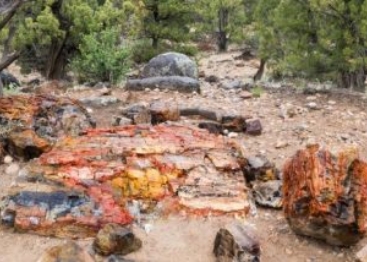10 Real Weapons That Contain Alien or Meteoric Materials
It might sound like something straight out of a sci-fi movie, but humans have been crafting weapons from meteorites for thousands of years. In fact, after gold and copper, some of the earliest metal objects ever made by humans were likely forged from iron that fell from the stars. That’s right—the Iron Age might have literally come from outer space.
But not just any meteorite will do. The key ingredient is meteoric iron, a unique iron-nickel alloy with some pretty extraordinary qualities. Unlike the iron found on Earth, this cosmic metal is incredibly malleable, making it perfect for early tools and weapons. Plus, it’s practically rust-proof—a feature that must have seemed almost magical to ancient civilizations. In the Middle East, it was often called “fire from heaven” or “thunderbolt metal.” The ancient Hittites of Turkey even had a saying: “Gold comes from Birununda, copper from Taggasta, but iron comes from heaven.”
This celestial material wasn’t just prized in the Middle East, though. From Asia to South America to the Arctic, cultures around the world revered meteoric iron, especially for crafting weapons. Some historians believe that even the legendary Damascus steel might have been made from meteorites. And here’s a surprising twist: despite being ancient technology, we’re still using meteorites to make weapons today. (Sorry, meteorite researchers!)
From ancient blades to modern marvels, here are ten incredible examples of how humanity has turned space rocks into tools of war—and art.
10.Inughuit harpoon tips
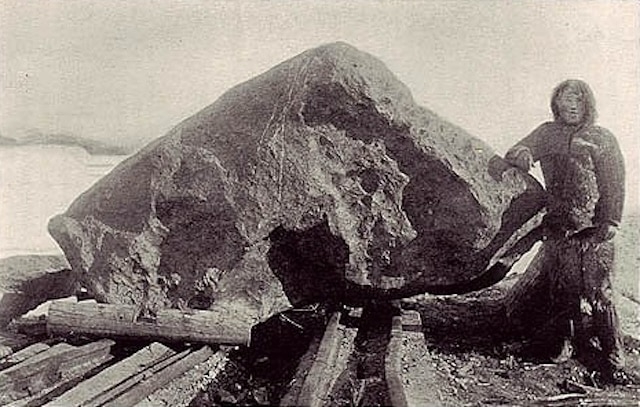
For thousands of years, the Inuit people—especially the Inughuit of Greenland—have relied on a truly out-of-this-world resource to survive the harsh Arctic environment: meteoric iron. This wasn’t just any metal; it came from one of the largest meteorites ever to strike Earth, known as the Cape York meteorite. The impact site, now called Meteorite Island, became a treasure trove for the Inuit, who used the space-born material to craft essential tools.
What makes meteoric iron so special? For starters, it’s incredibly malleable, meaning it can be shaped without the need for intense heat. Unlike traditional iron ore, which requires smelting, the Inuit could simply chip off pieces of the meteorite and hammer them into shape—a technique called cold forging. Imagine flint-knapping, but with metal. This made it perfect for life in the Arctic, where resources were scarce and survival depended on ingenuity.
The most common tools they created were harpoon tips and knife blades, often mounted on narwhal tusks. These tools represented a massive leap forward from the bone and stone implements used in earlier times. For the Inuit, meteoric iron wasn’t just a material—it was a game-changer, allowing them to thrive in one of the most unforgiving places on Earth.
It’s fascinating to think that a piece of space rock, hurtling through the cosmos, ended up playing such a crucial role in human survival. The Inuit’s use of meteoric iron is a testament to their resourcefulness and a reminder that sometimes, the most extraordinary solutions come from the most unexpected places.
9.Alaca Höyük dagger

Discovered at the ancient site of Alaca Höyük in Turkey, the Alaca Höyük dagger is one of the oldest known weapons made from meteoric iron, dating back to around 2500 BC. This remarkable artifact didn’t just shed light on early metallurgy—it completely changed how archaeologists understand the history of iron. Before its discovery, experts believed that humans only figured out how to smelt iron from earthly ores around 1200 BC in the Near East. But the dagger, along with other ancient iron objects like the Gerzeh beads from Egypt, proved that people were using iron thousands of years earlier—and that their source was literally from the stars.
The dagger is a masterpiece of the Hattian culture, an early civilization in Anatolia that flourished from 3000 BC until it was absorbed by the Hittites around 2000 BC. Its stunning solid gold hilt suggests it wasn’t just a practical tool but likely a ceremonial object, perhaps used in rituals or as a symbol of power. To confirm its otherworldly origins, researchers used a portable X-ray fluorescence analyzer, which detected the telltale signs of nickel and cobalt—key markers of meteoric iron.
Today, you can see this incredible piece of history for yourself at the Museum of Anatolian Civilizations in Ankara. It’s a tangible link to a time when humans looked to the skies for resources and inspiration, long before the Iron Age as we know it began.
8.Tutankhamun’s iron dagger
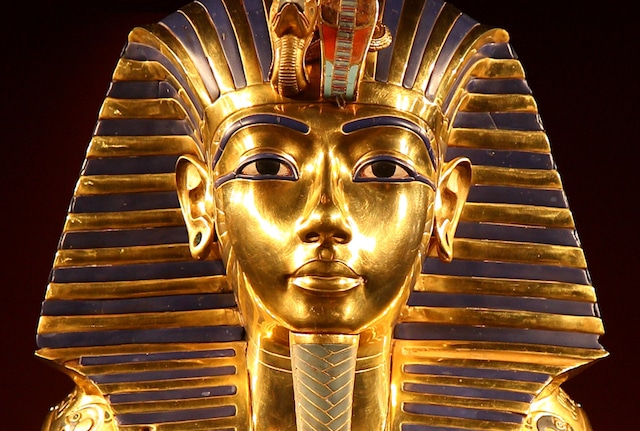
The discovery of the pharaoh Tutankhamun’s tomb in 1922 revealed a great many fascinating artifacts, but the iron dagger stands out among them. Dating to approximately 1350 BC, it’s a stunning example of how meteoric iron was used in ancient Egypt in the service of “living gods”.
The blade itself is unique, with a richly decorated solid gold hilt, rock crystal pommel, and ornate sheath embellished with lilies and jackals. Its meteoric origin was actually confirmed during the same set of scans as the Alaca Höyük dagger.
It’s hard to imagine nowadays but in ancient Egypt, as elsewhere, iron was rare and exceedingly precious—hence the inclusion of iron objects in the burial of Tutankhamun. It’s worth bearing in mind this was long before the Iron Age had begun. So the iron dagger (and earlier discoveries like the meteoric iron beads from Gerzeh) is further evidence that ancient civilizations used meteorites long before mining for ores.
7.Chinese dragon axes
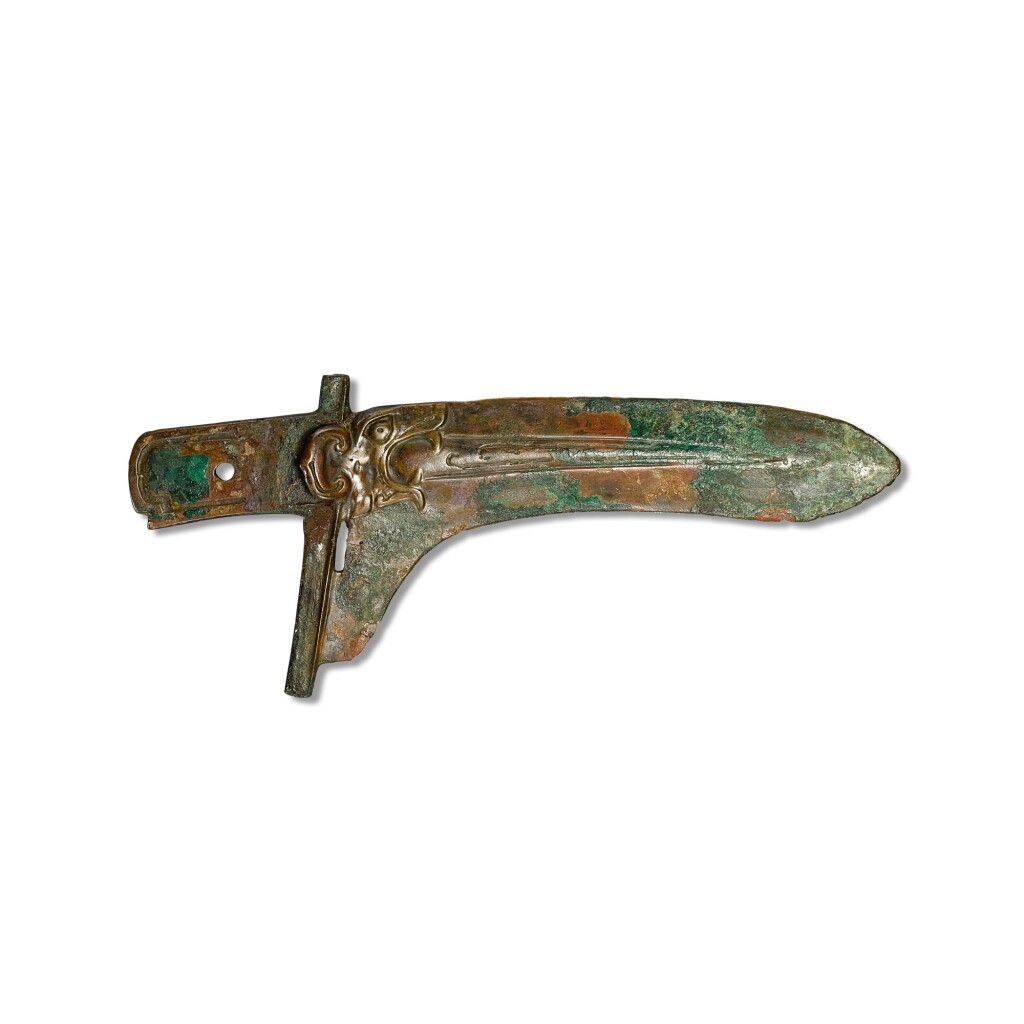
In Chinese culture, Heaven has always been more than just a concept—it’s a guiding force in cosmology, philosophy, religion, and even politics. For centuries, emperors claimed their right to rule through the “Mandate of Heaven,” a divine approval that legitimized their power. So, it’s no surprise that Heaven also left its mark on Chinese material culture, quite literally. Long before humans mastered the art of smelting iron from the earth, they were crafting tools and weapons from iron that fell from the sky—meteoric iron. These celestial materials weren’t just practical; they carried a deep symbolic weight, blending the earthly with the divine.
Take, for example, two axe heads from the early Zhou dynasty, dating back to around 1027 BC. These artifacts are a fascinating mix of form and function. The first is a broad axe head, about 20 centimeters long and weighing 400 grams. Its blade is made of meteoric iron, while the tang (the part that attaches to the handle) is bronze. But what really sets it apart is its intricate decoration: a stylized dragon and a taotie mask, inlaid with tiny pieces of colored stone. The second axe head, a dagger type, features an iron tip securely cast onto a bronze body, also adorned with dragon motifs.
What’s intriguing is that these axes weren’t just ceremonial. Despite their ornate designs, they were fully functional, suggesting they were used in both battle and ritual. This dual purpose highlights the importance of meteoric iron in early Chinese society—not just as a superior material to bronze, but as a symbol of heavenly power and craftsmanship.
These axe heads are more than just ancient tools; they’re a testament to how the Chinese of the Zhou dynasty bridged the gap between the practical and the spiritual, turning celestial gifts into objects of both beauty and utility.
6.Mörigen arrowheads
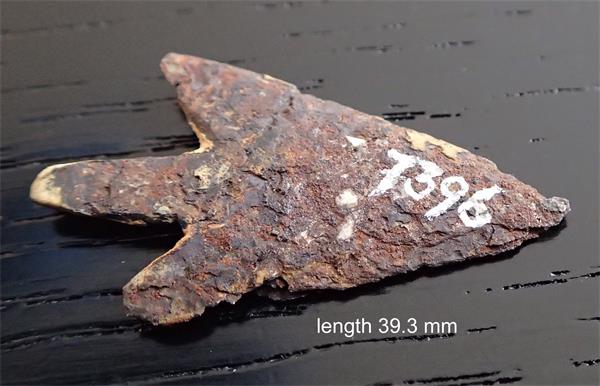
In the 19th century, archaeologists in Mörigen, Switzerland unearthed a Bronze Age arrowhead with an extraordinary secret. Forged sometime between 800 and 900 BC, this tiny artifact measured just 39 mm in length and weighed only three grams; but it was composed of something out of this world: meteoritic iron.
The discovery was groundbreaking too. In the Bronze Age, iron was very rarely used due to the complexity of extraction from natural ores. But here was an example of using iron that fell from the sky—and for something as mass-produced as an arrowhead too.
Analysis showed the composition included iron, nickel, and the telltale radioactive isotope aluminum-26, confirming its extraterrestrial origin. Unexpectedly, however, its composition didn’t match specimens found in the nearby Twannberg field. Instead, the closest match was the Kaalijarv meteorite from Estonia, about 1,600 kilometers away—suggesting the presence of extensive trade networks in prehistoric Europe. The arrowhead’s journey probably followed trade routes for Baltic amber, indicating its value as a commodity spanning long distances.
5.Jahangir’s space blades
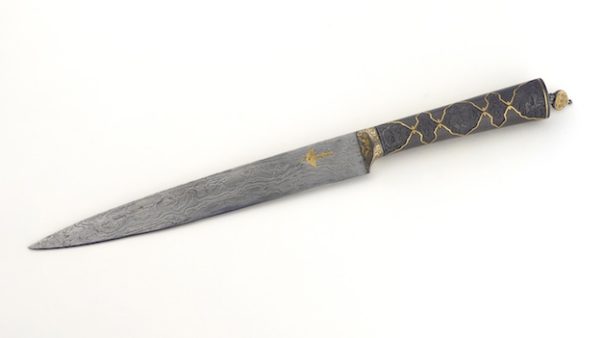
In the early 17th century, a meteorite crashed in Jullundar (modern Jalandhar), India, causing an explosion that shook the whole region. Local tax collector Muhammad Sa’id was the first on the scene, discovering an enormous, red-hot lump of iron in the middle of a smoldering crater. Sa’id knew exactly what it was—ahan I barq, or “lightning iron”—and immediately had it sent to the Emperor.
Like most rulers, the Mughal Emperor Jahangir believed himself divinely ordained and naturally saw the meteorite as a gift from above. Upon receiving the lump of otherworldly iron, he commissioned his best armorer to forge him three weapons befitting his office: two magnificent swords and a dagger, unmatched in beauty and sharpness.
The swords, named Shamsher I Qati (“Cutting Sword”) and Shamsher I Barq-sirisht (“Lightning Natured Sword”), became symbols of his power and divine approval. They also reflected his deep personal interest in science; the Mughal court was a center of intellectual activity and Jahangir was an enthusiastic patron.
4.Czar Alexander’s peace sword
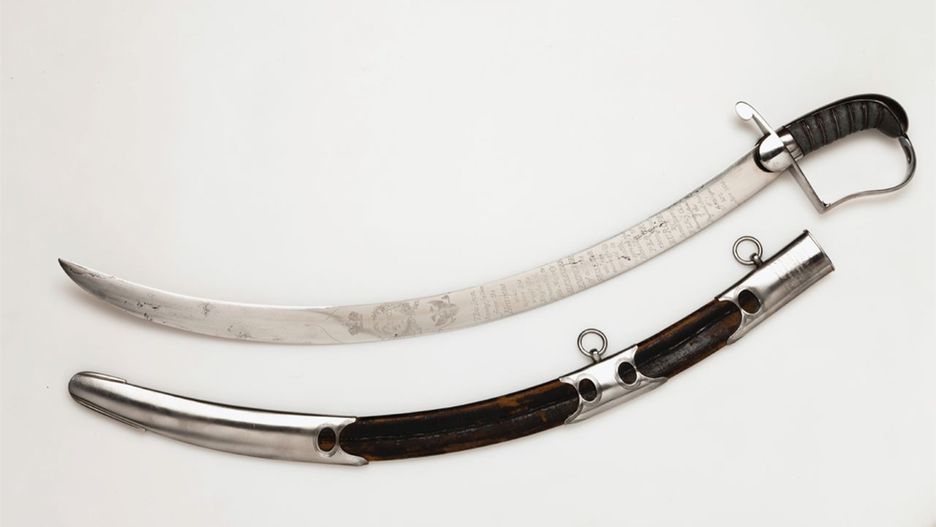
In the early 1800s, Russian Czar Alexander I received a gift unlike any other—a sword forged from a meteorite. This wasn’t just any space rock; it was the Cape of Good Hope meteorite, a lump of iron and nickel discovered by Europeans in the 18th century. Interestingly, the meteorite had a surprising history before it became a blade: it had once been used as a ship’s anchor. Talk about a cosmic upgrade!
The sword’s creation was overseen by James Sowerby, a British naturalist and astronomer. At the time, Sowerby believed this would be the first sword ever made from meteorite iron—a claim we now know isn’t true, but it certainly adds to the story. The blade itself was crafted in just 10 hours, using a mix of hot and cold forging techniques. Despite its quick production, the sword is a masterpiece. It has a sleek, curved design with a steel hilt and a grip wrapped in fish skin, accented with silver bands. One side of the blade is inscribed with the words “PURE METEORIC IRON,” while the other boasts a poetic line about the iron “having fallen from the heavens.” The blade also features the Imperial Crown of Russia, a two-headed eagle, and a palm and laurel wreath surrounding the word “MERCY.” The scabbard, believed to be made of pig skin, is just as elegant, with steel fittings to match.
In return for this extraordinary gift, Czar Alexander I sent Sowerby a diamond-encrusted ring—a fitting token of gratitude for a weapon that bridged the gap between Earth and the stars.
3.Sir Terry’s magic sword
When Terry Pratchett, the author of the Discworld series, was knighted in 2010, he embraced the honorific in a manner befitting his legacy: he forged himself a sword. It couldn’t be just any sword; it had to be a sword from outer space.
Having found deposits of meteoric iron ore in a field near his home in rural Wiltshire, he decided to infuse his new weapon with “thunderbolt iron.” He even smelted the ore himself, using a makeshift kiln made of clay and hay. This hands-on approach, he said, gave a tangible reality to his literary work. He did, however, get a local blacksmith to shape the sword and adorn it with silverwork. It was a true knight’s blade. Unfortunately, though, with England being what it is today, it would have been illegal to carry it. Instead, this knight of the realm felt obliged to stash it away in a secret location to avoid any trouble with the police.
2.Tentetsutou
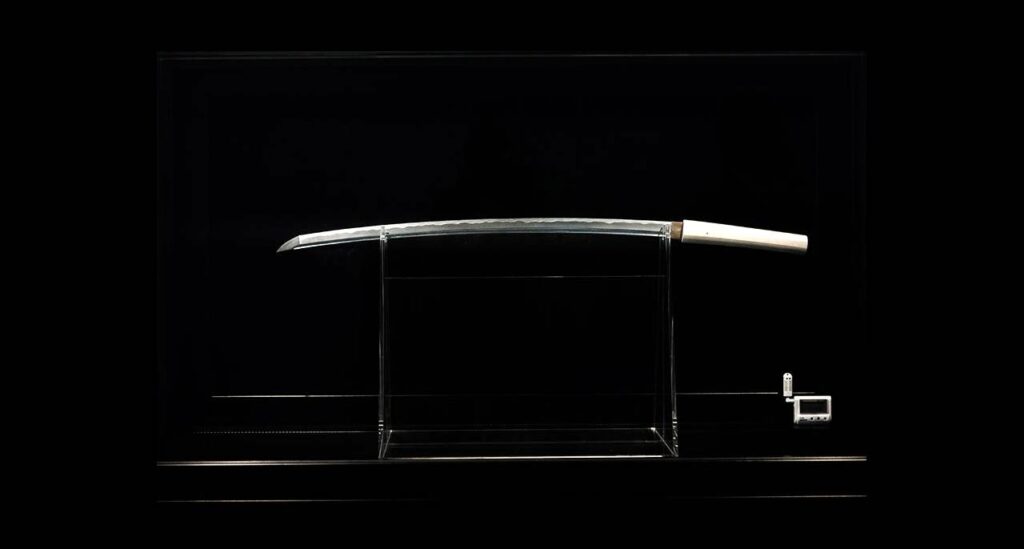
The Kusanagi-no-Tsurugi (“Grass Cutting Sword”), formerly known as Ame-no-Murakumo-no-Tsurugi (“Heavenly Sword of Gathering Clouds”) is a legendary Japanese sword and part of the Imperial Regalia. However, it’s so sacred to the Shinto religion that nobody can see it except during rare coronations. As the story goes, it was found inside a vanquished serpent by the deity Susanoo and bestowed upon the sun goddess Amaterasu. Because scientists aren’t allowed to analyze the metal, this origin remains the best we have to go on. But it is now thought to have been crafted from meteoric iron—which makes it no less a symbol of approval from the gods.
Much more is known about the Tentetsutou or “Sword of Heaven,” a 21st-century katana from the modern swordsmith Yoshindo Yoshiwara. Forged from the billion-year-old Gibeon meteorite that landed in Namibia 450 million years ago, it calls to mind humans’ earliest discoveries of iron. And, unlike the Kusanagi, it’s openly on display to the public. You can see it at the Chiba Institute of Technology.
1.Cabot Guns’ pistol set
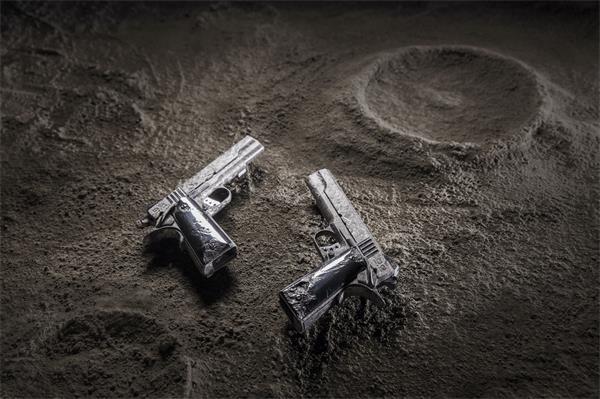
Swords and knives might be cool, but let’s face it—they’re not exactly practical in the modern world. Enter Cabot Guns’ Big Bang Pistol Set, a pair of 1911 semi-automatic pistols that take things to a whole new level. Why? Because they’re made from a billion-year-old Gibeon meteorite. That’s right: these aren’t just any guns—they’re the first firearms (and the first mechanical devices, period) crafted from materials that originated in outer space. While the internal components like springs, barrels, and screws are made from more traditional materials, the pistols’ frames and slides are pure meteorite.
Creating these cosmic firearms wasn’t easy. The meteorite’s journey through space left it with unique challenges. It had undergone natural heat treatment, making it softer and filled with inclusions like oxide and sulfide compounds, which threatened its structural integrity. To work around this, the team used advanced techniques like X-rays, 3D modeling, and electron-beam welding to ensure the metal wasn’t damaged during the process.
The result is nothing short of stunning. Acid-etched to reveal the meteorite’s famous Widmanstätten pattern—a crystalline structure highly prized by collectors—the pistols also retain parts of the meteorite’s natural outer surface, or “bark.” Each pistol is unique, designed as a mirrored pair for right- and left-handed shooters. Even the serial numbers are special, featuring the geographical coordinates where the Gibeon meteorite was discovered.
Of course, such a one-of-a-kind creation comes with a price tag to match. The set is listed at a jaw-dropping $4.5 million, making it the most expensive pair of guns ever sold. Whether you’re a firearms enthusiast, a space geek, or just someone who appreciates the extraordinary, these pistols are a testament to human ingenuity and the endless possibilities of combining art, science, and a little bit of cosmic magic.
















